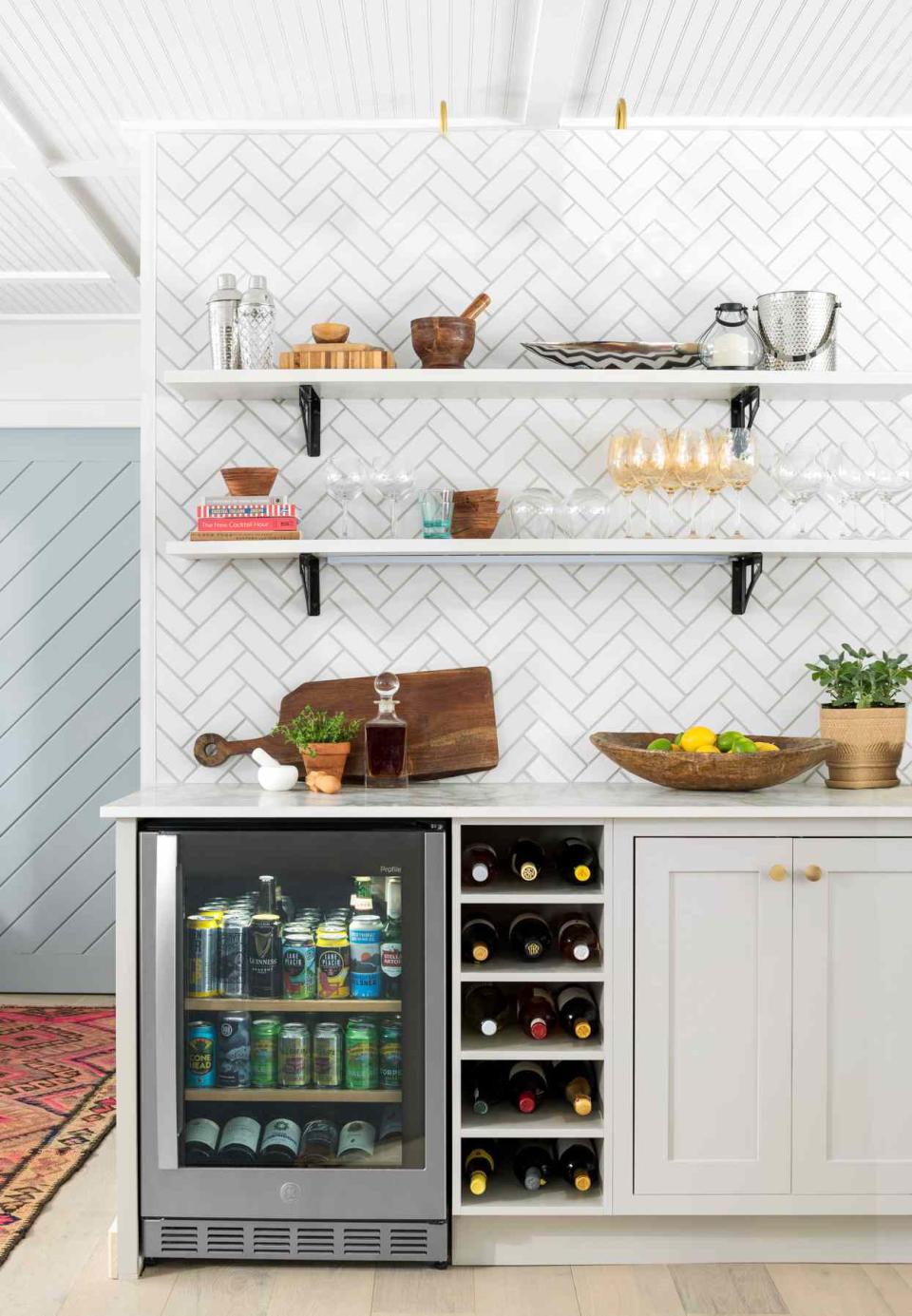The Prep Kitchen Is a Functional Solution to Crowded Open Concept Kitchens
Prep kitchens—also called prep pantries—offer a secluded spot to prepare food and drinks, away from the hustle and bustle of open concept kitchens.

The kitchen is one of the most important places in a home. It’s where meals are made, where many of us start and finish our days, and one of the most utilized rooms in a home. It’s no wonder that homeowners like to put a little extra functionality into their kitchen designs when space permits, and one of the newest trends that design and home experts are seeing in kitchen design is the prep kitchen.
The concept of an ancillary workspace for the kitchen is certainly not new. In the 19th century, wealthy English and American homes were regularly outfitted with butler’s pantries (a term still used today), which were used to store silverware, china, serving pieces, and other kitchen items.
Today, we’re seeing prep kitchens, also known as prep pantries, become increasingly popular. This modern alternative to a butler’s pantry is no longer just reserved for the richest (although it does require a home with some space to spare): It is becoming an increasingly popular choice for homeowners of all kinds who entertain regularly or just want to keep their kitchens clutter-free.
:

What Is a Prep Kitchen?
Prep kitchens, also known as prep pantries, are separate ancillary spaces that are attached to the main kitchen and designated specifically for food preparation. Like a regular pantry, prep kitchens are used to store food, but typically also include plenty of counter space, shelving, and sometimes even appliances like dishwashers, stoves, coffee makers, microwaves, and more.
So what’s the difference between a butler’s pantry and a prep kitchen or pantry? While both are additional rooms to the kitchen designed for storage and preparation, modern butler’s pantries tend to be smaller walk-through areas or hallways where glassware and barware is stored and that lead to the dining room. Butler’s pantries are primarily used as places to prepare drinks or stage food before serving, and may have a bit of counter space along with things like a bar sink or drink/wine fridge. In contrast, prep kitchens are larger and are designed to support all kinds of food preparation and daily kitchen tasks, out of the way of other activities that may take place in the modern kitchen or open concept space, including homework, working from home, entertaining, and more.
:
Prep Kitchen Functionality
“In modern times, prep pantries are attractive to those who entertain frequently since it keeps the ‘mess’ out of the main kitchen,” says professional organizer and pantry expert Melissa Gugni.
Anyone who hosts regularly knows that no matter what you do, guests will inevitably gather in the kitchen at one point or another, even in non-open concept floorplans. The kitchen is a natural hub of the home, after all! So having a separate space where you can easily prepare food and drinks while keeping the kitchen presentable is an attractive option.
A prep kitchen can be helpful for some households even when you’re not entertaining.
“I am finding that larger families like them, too, since they keep the kitchen chaos confined to the side. I have helped design prep pantries with lower drawers and cabinets customized for kids’ snacks and things that are easy for them to grab,” Gugni says.

What to Include in a Prep Kitchen
A good prep kitchen is one that is customized to the homeowner’s needs and lifestyle, according to Gugni.
“For entertaining, a fridge, ice maker, wine fridge, oven, and dishwasher would be ideal,” she says. “For a family, a blender, toaster, coffee maker/grinder, baby food maker, bottle warmer, and other appliances (particularly ones that don't look great aesthetically!) can fit well.”
At the very least, most prep kitchens should have enough counter space to easily prepare food, a sink, and plenty of storage. Gugni also recommends integrating your dry goods storage within your prep kitchen: “It is both practical and can look so beautiful—I am partial to open shelving on one wall for jars of grains and beans and spice” she says.

